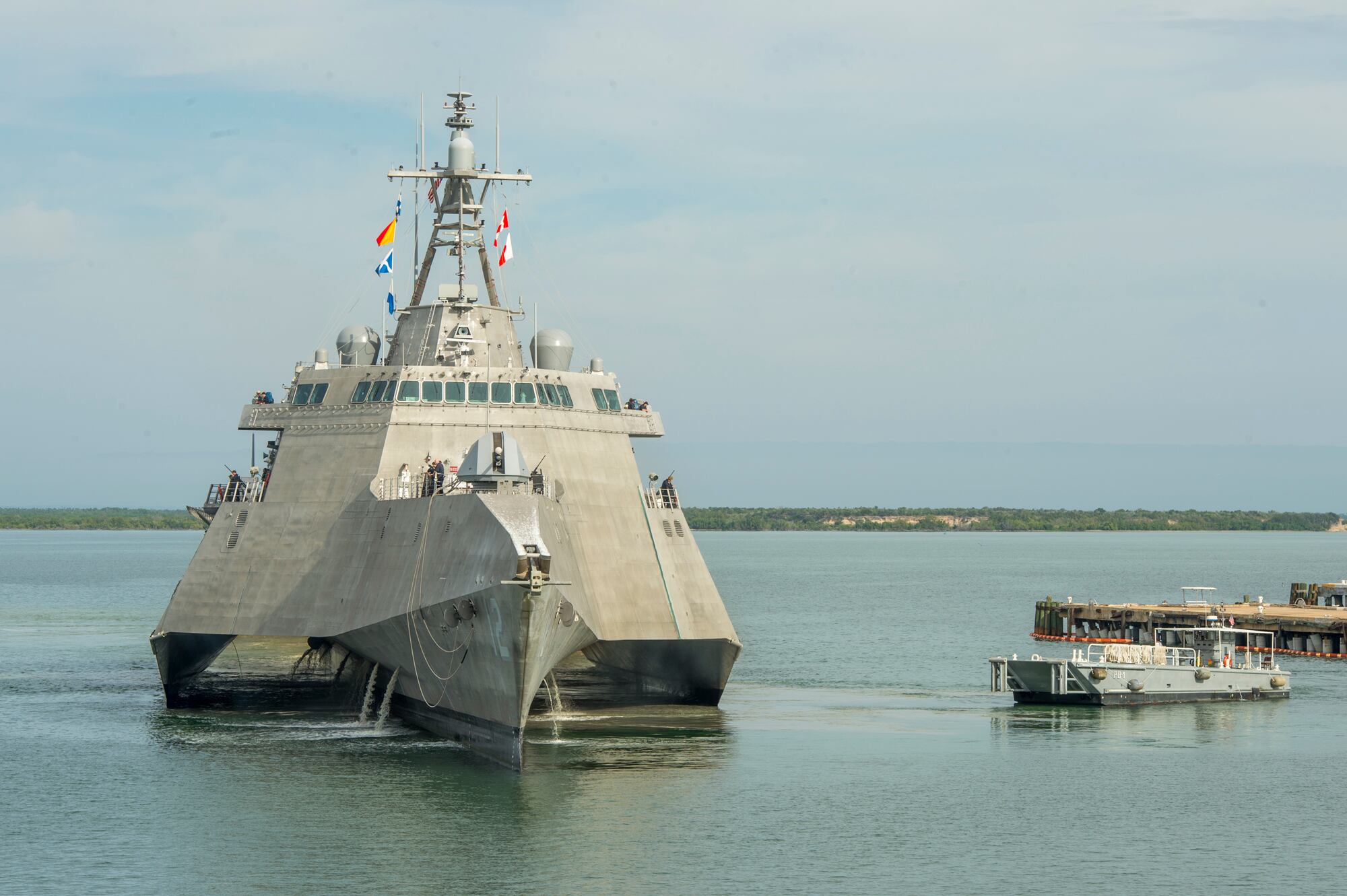ARLINGTON, Va. — The Navy has tapped Raytheon’s Enterprise Air Surveillance Radar as its preferred radar for the future frigate, but Swedish defense company Saab is closely watching the program to see if an opening develops for its Sea Giraffe agile multibeam radar, company officials said Monday.
Saab believes its Sea Giraffe might be able to fill a complimentary role on the future frigate, known as FFG(X), even if the Navy moves ahead with its presumed choice of EASR, said Jay Abendroth, Saab’s vice president and general manager of sensor systems.
“Right now, EASR is the main surveillance radar on there,” he told Defense News during an interview on the floor of the Surface Navy Association symposium.
“What they are going to expect the frigate to do does open a lot of potentials, because again it’s not just about air surveillance with this set of radars, it gets a lot more into the other missions — navigation and other things — that might not actually be required of EASR. There may be other radar or sensor packages that will do those missions as well.”
Click here to see more coverage of Surface Navy Association symposium 2018!
Saab’s Sea Giraffe family of systems has been a success story for its U.S. radar business. General Dynamics in 2005 selected the Sea Giraffe for the Independence-class littoral combat ship built by Austal, after which the Navy gave it the designation AN/SPS-77.
A derivative of the AN/SPS-77, called the multi-mode radar, has been chosen for the Coast Guard’s Offshore Patrol Cutter, with first delivery expected this year. The company is also adapting the AN/SPS-77 for Nimitz-class carriers as well as America-class and Wasp-class amphibious assault ships, where it will support air traffic control.
Saab is under contract to provide the AN-SPS-77 for littoral combat ships up to LCS 30, and the program is slated to end after 32 ships are produced. However, there are signs that the Navy could expand the LCS shipbuilding program even as they press ahead with the development of FFG(X).
RELATED

For that reason, the company is closely watching to see if future orders materialize, or whether the Navy downselects to a single hull or combat management system if LCS production is to continue, Abendroth said. Lockheed Martin’s COMBATSS-21 system, which is used on the Freedom-class LCS, is considered the favorite of a potential future downselect.
“Saab is trying to ensure that there’s no [nonrecurring engineering] bill if you were to switch to a different combat system, for example, to make it really agnostic,” he said. “Across the world, we’re seeing Lockheed has a very strong combat management system and we see that as almost a requirement to interface with, so that if there is a downselect it’s easy for us to [plug in].”
The company is also keeping an eye out for future opportunities, such as the Coast Guard’s polar icebreaker requirement, he added.
Valerie Insinna is Defense News' air warfare reporter. She previously worked the Navy/congressional beats for Defense Daily, which followed almost three years as a staff writer for National Defense Magazine. Prior to that, she worked as an editorial assistant for the Tokyo Shimbun’s Washington bureau.








